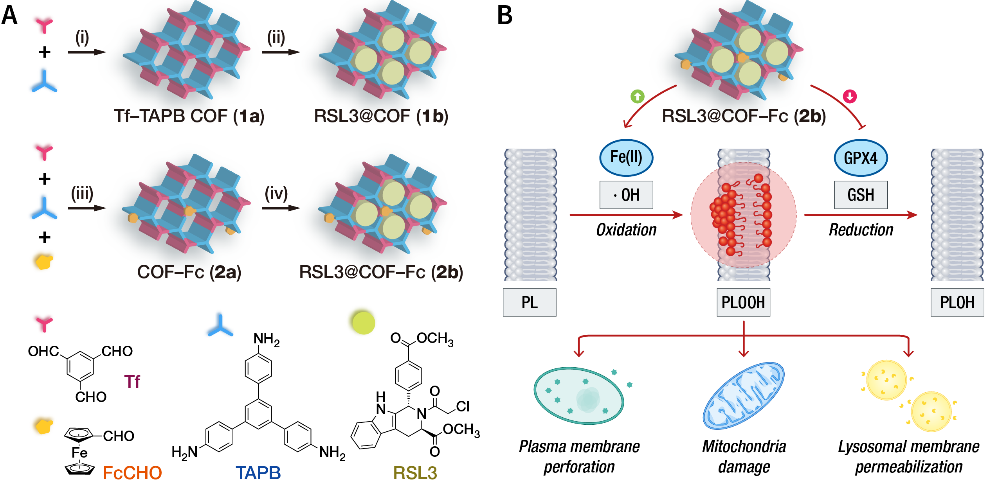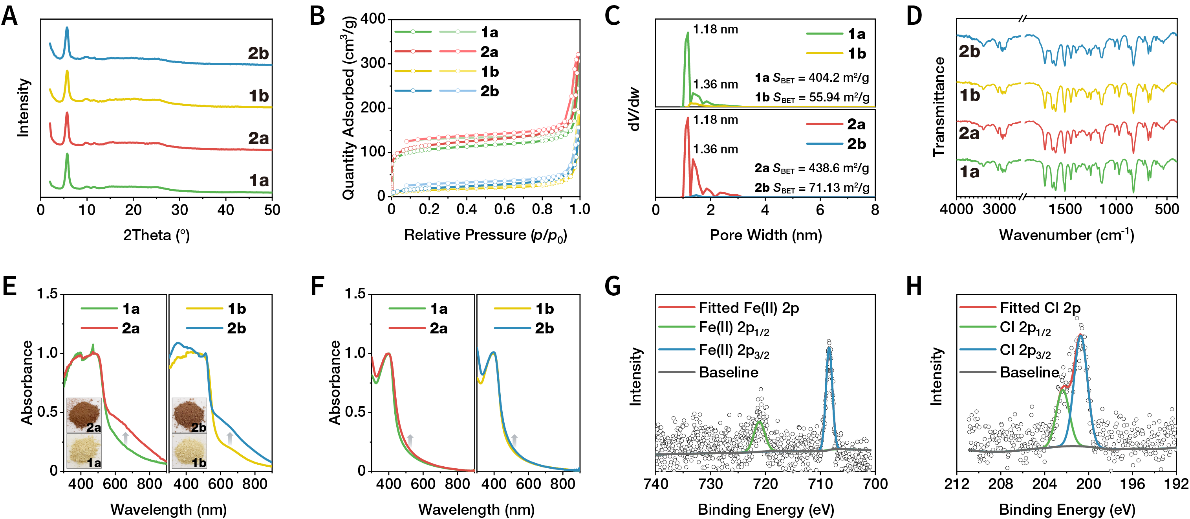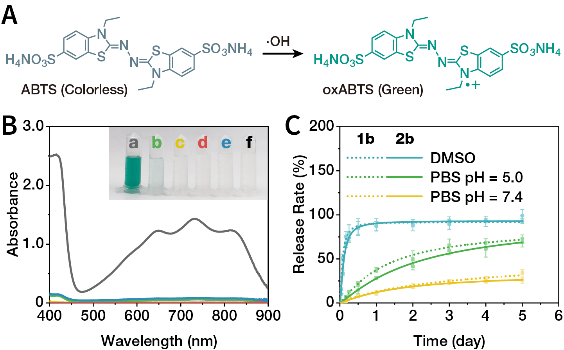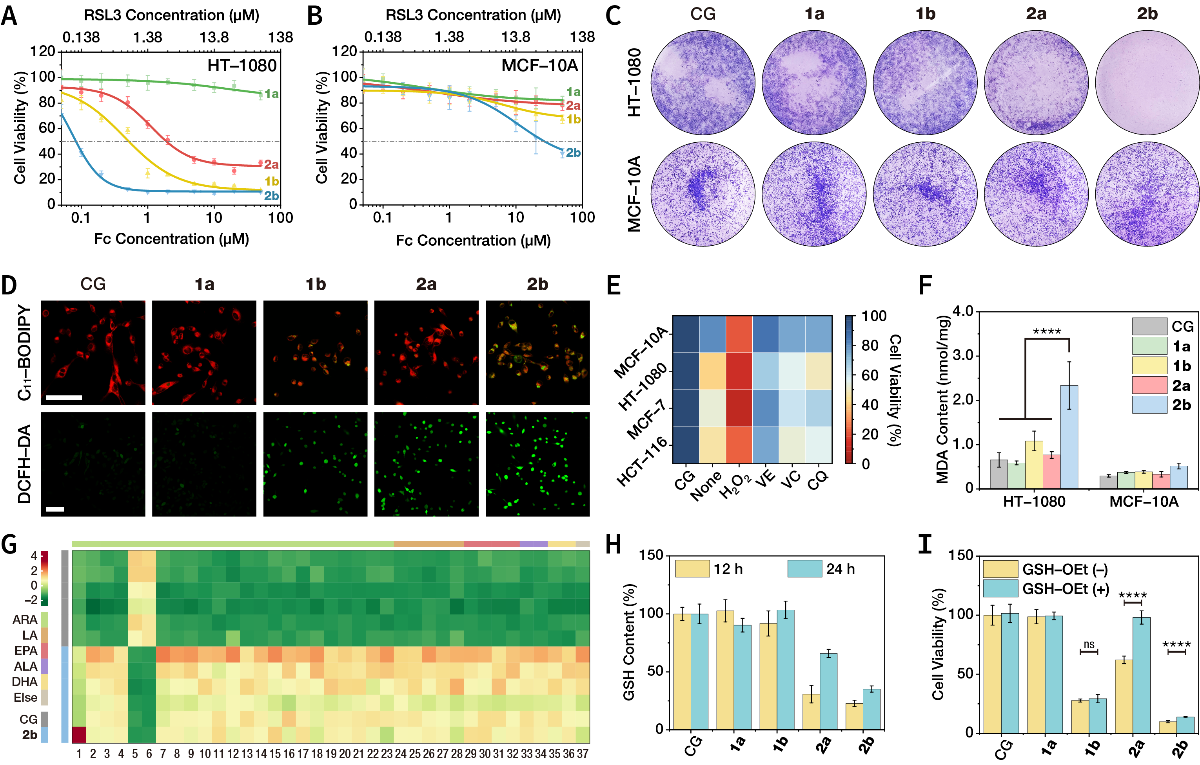
hotline£º
17715390137
Tel/Wechat£º
18101240246 (Technology)
0512-68565571
Email£ºmxenes@163.com £¨Sales Engineer£©bkxc.bonnie@gmail.com
Scan the code to follow or search the official account on WeChat:
2D Materials Fronrier After paying attention,
click on the lower right corner to contact us,
Enter enterprise WeChat.
Professional Services Online

[research background].
Chemical kinetic therapy (CDT) induces cell death by breaking down high concentrations of H2O2 in tumor cells into toxic OH (Fenton reaction). However, at present, the efficacy of CDT is usually limited by the up-regulated antioxidant defense mechanism in cells. For example, glutathione peroxidase 4 (GPX4), with the participation of glutathione (GSH), can quickly reduce phospholipid hydroperoxide produced by OH oxidation to lipid alcohols, thus realizing lipid repair and avoiding OH-induced cytotoxicity. In order to improve the effect of CDT, transition metal oxides are commonly used as catalysts for Fenton reaction. These inorganic materials with potential long-term toxicity may block the existing research in the laboratory stage, and the clinical transformation will face an insurmountable gap.
[article Overview].
In order to enhance the effect of CDT at low metal content, Professor Dong Yubin of Shandong normal University designed nano-drug RSL3@COF-Fc: ferrocene formaldehyde (FcCHO) was doped into covalent organic framework (COFs) by in-situ reaction at room temperature, and GPX4 inhibitor RSL3 was loaded in the channel. The size of RSL3@COF-Fc particles is about 170 nm. After entering the cells through pinocytosis, the released RSL3 blocks the main antioxidant pathway through covalent inhibition of GPX4, thus destroying the intracellular redox homeostasis; in this unstable case, a small amount of OH induced by Fenton reaction is enough to lead to lipid peroxide accumulation, subcellular structural damage and final iron death. This study enriches the candidate library of COFs nanomaterials and provides a new example for enhancing reactive oxygen species-mediated tumor therapy by destroying redox homeostasis.

[guide to picture and text].

Figure 1.
Schematic diagram of material preparation and treatment mechanism.
(a) preparation of RSL3@COF-Fc. Different from the classical COF preparation method (solvothermal), this material is prepared at room temperature and is easy to scale.
(B) RSL3@COF-Fc induced lipid peroxidation and subcellular structure damage by Fenton reaction and GPX4 inhibition.

Figure 2.
Characterization of material composition.
(a) the powder X-ray diffraction shows the periodic structure of the material.
(B) the nitrogen adsorption isotherm indicates the porosity of the material.
(C) the pore size distribution curve shows permanent pores, and the decrease of pore volume after loading RSL3 indicates the load in the pores.
(d) Infrared spectrum shows the successful modification of Fc and the loading of RSL3.
(e) UV-visible diffuse reflectance spectrum.
(F) UV-vis spectrum of suspension.
(G) High resolution XPS spectrum of Fe.
(h) High resolution XPS spectra of Cl.

Figure 3.
Morphology characterization. The material has regular morphology, uniform size distribution and good dispersion.
(a) scanning electron microscope.
(B) transmission electron microscope.
(C) HAADF-STEM image and element mapping analysis.
(d) dynamic light scattering analysis.

Figure 4.
Property characterization.
(a) ABTS was used as an indicator to detect the OH produced by H2O2 decomposition induced by COF-Fc.
(B) Drug release kinetics in PBS solution.

Figure 5.
Anti-tumor therapy at the cellular level.
(a) the toxicity of nano-drugs to HT-1080 fibrosarcoma cells.
(B) the toxicity of nano-drugs to MCF-10A breast epithelial cells.
(C) Cell clone formation test.
(d) the lipid peroxidation induced by nano-drugs was detected by C11-BODIPY probe, and the accumulation of total reactive oxygen species induced by nano-drugs was detected by DCFH-DA probe.
(e) weakening or enhancing the therapeutic effect of different types of reactive oxygen species scavengers.
(F) the content of MDA in cells was detected.
(G) 37 kinds of differential metabolites were detected by targeted metabonomics analysis. Among them, the up-regulation of iPF2 ¦Á-I, a marker of non-enzymatic lipid peroxidation, indicates the key role of Fc.
(h) intracellular GSH content was detected.
(I) exogenous GSH saved COF-Fc-induced cell death, but its effect on RSL3@COF-Fc was very limited.

Figure 6.
Effect of antineoplastic therapy on subcellular structure.
(a) the subcellular distribution of the material.
(B) the morphological changes of mitochondria and lysosomes were detected by transmission electron microscope.
(C) JC-1, LysoTracker and AO fluorescence probes were used to detect mitochondrial membrane potential, lysosomal alkalization and lysosomal membrane permeability, respectively.

Figure 7.
Animal-level antineoplastic therapy.
(a) schematic diagram of treatment plan.
(B) the changes of tumor volume during treatment.
(C) the quality of the tumor at the end of treatment.
(d) tumor photos at the end of treatment.
(e) GPX4 activity of tumor tissue on the 7th day of treatment.
(F) the content of malondialdehyde in tumor tissue on the 7th day of treatment.
(G) the content of GSH in tumor tissue on the 7th day of treatment.
(h) HE, Ki67 and TUNEL analysis of tumor tissue at the end of treatment.
This information is from the Internet for academic exchange only. if there is any infringement, please contact us to delete it immediately.

| Reminder: Beijing Beike New Material Technology Co., Ltd. supplies products only for scientific research, not for humans |
| All rights reserved © 2019 beijing beike new material Technology Co., Ltd ¾©ICP±¸16054715-2ºÅ |